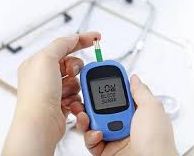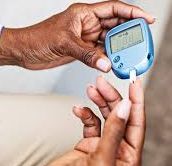
Low Blood Sugar Causes Symptoms, & Quick Treatment Tips
Low blood sugar, also known as hypoglycemia, occurs when the body’s blood glucose levels drop below normal. This can cause symptoms like dizziness, sweating, shaking, and confusion. It often affects people with diabetes but can also happen due to skipping meals, excessive exercise, or certain medical conditions. Recognizing the signs early is important to prevent serious complications. Simple treatments, such as eating a fast-acting carbohydrate, can quickly raise blood sugar levels and restore balance.

Low blood sugar, also known as hypoglycemia, occurs when the level of glucose in the blood drops below the normal range, usually less than 70 mg/dL. It is most commonly associated with diabetes but can also occur in people without. This can be caused by several factors, including taking too much insulin or other diabetes medications, skipping meals, exercising more than usual, or drinking alcohol.
Causes of Low Blood Sugar
In people with diabetes:
Taking too much insulin or diabetes medication.
Skipping or delaying meals.
Exercising more than usual without adjusting food intake or medication.
Drinking alcohol without eating enough food.
In people without diabetes:
Prolonged fasting or malnutrition.
Certain medications (e.g., quinine, some antibiotics).
Hormonal imbalances (e.g., adrenal or pituitary gland disorders).
Severe liver or kidney disease.
Excessive alcohol consumption.
Some of the symptoms of low blood sugar include:
Shaking or trembling
Sweating
Fast heartbeat
Blurred vision
Dizziness or lightheadedness
Confusion or difficulty concentrating
Fatigue or weakness
Headache
Anxiety or irritability
Hunger or nausea
Irritability or mood changes
Severe hypoglycemia:
Confusion or difficulty concentrating
Slurred speech
Loss of coordination
Seizures
Unconsciousness or coma (in extreme cases)
If you experience symptoms of low blood sugar, it is important to check your blood sugar level. If it is below your target range, you should immediately consume a source of fast-acting carbohydrate, such as:
- Glucose tablets or gel
- Fruit juice or regular soda
- Hard candies, such as jellybeans or lifesavers
- Honey or syrup
After consuming the fast-acting carbohydrate, wait 15 minutes and check your blood sugar level again. If it is still below your target range, repeat the process until your blood sugar level is back to normal.
If your symptoms persist, or if you have severe symptoms such as unconsciousness or seizures, seek medical attention immediately. In addition, if you experience frequent episodes of low blood sugar, talk to your healthcare provider about adjusting your treatment plan to help prevent future episodes.
THINGS WHICH CAN CONTRIBUTE TO LOW BLOOD SUGAR
Several factors can contribute to low blood sugar (hypoglycemia), including:
- Taking too much insulin or other diabetes medications
- Delaying or skipping meals or snacks
- Not eating enough carbohydrates
- Exercising more than usual
- Drinking alcohol without eating enough food
- Certain medications, such as those used to treat high blood pressure or heart disease
- Medical conditions, such as liver or kidney disease, hypothyroidism, or pancreatic tumors
- Hormonal imbalances, such as an overproduction of insulin or cortisol
- Infection or illness, which can increase the body’s demand for glucose
- In rare cases, an insulin-producing tumor in the pancreas (insulinoma)
Preventing Low Blood Sugar
-
For people with diabetes:
- Monitor blood sugar regularly.
- Take medications as prescribed and adjust doses with your doctor’s guidance.
- Eat balanced meals and snacks on a regular schedule.
- Be cautious with alcohol and exercise.
-
For non-diabetic individuals:
- Address underlying medical conditions.
- Avoid prolonged fasting.
-
Eat small, frequent meals if prone to hypoglycemia.

How to Treat Low Blood Sugar
If you suspect low blood sugar, act quickly:
-
Consume fast-acting carbohydrates (15-20 grams):
- Glucose tablets or gel
- 4 ounces (120 mL) of fruit juice or regular soda (not diet)
- 1 tablespoon of sugar, honey, or syrup
- Hard candies or gummy bears
- Wait 15 minutes and recheck blood sugar:
- If levels are still low, repeat the process.
- Follow up with a snack or meal:
- Once blood sugar stabilizes, eat a small snack or meal containing protein and complex carbs (e.g., peanut butter and crackers) to prevent another drop.
-
In severe cases:
-
If the person is unconscious or unable to swallow, do not give food or drink. Use an emergency glucagon injection (if available) and call emergency services immediately.
-
When to Seek Medical Help
- If you experience frequent episodes of low blood sugar without an obvious cause.
- If symptoms are severe or do not improve after treatment.
- If you are unsure whether your symptoms are due to low blood sugar.
Always consult a healthcare professional for proper diagnosis and management, especially if you have recurring episodes of hypoglycemia.
It is important to work with your healthcare provider to identify the cause of your low blood sugar and make any necessary adjustments to your treatment plan to help prevent future episodes. Keeping track of your blood sugar levels and symptoms can also help identify patterns and triggers for low blood sugar.
Disclaimer: The information provided in this content is for general informational purposes only. It is not intended as medical or healthcare advice, diagnosis, or treatment. Always seek the advice of a qualified healthcare professional with any questions you may have regarding a medical condition or healthcare decisions.

